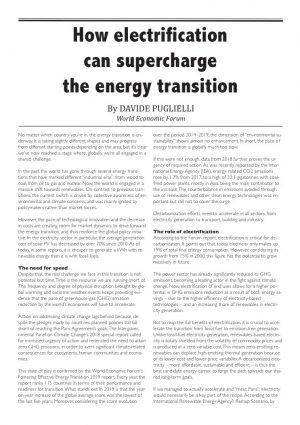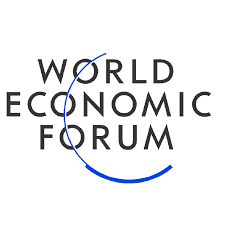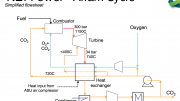 No matter which country you’re in, the energy transition is underway. It is taking slightly different shapes and may progress from different starting points depending on the area, but it’s clear we’ve now reached a stage where, globally, we’re all engaged in a shared challenge.
No matter which country you’re in, the energy transition is underway. It is taking slightly different shapes and may progress from different starting points depending on the area, but it’s clear we’ve now reached a stage where, globally, we’re all engaged in a shared challenge.
In the past, the world has gone through several energy transitions that have marked different “industrial eras”: from wood to coal, from oil to gas and nuclear. Now, the world is engaged in a massive shift towards renewables. On contrast to previous transitions, the current switch is driven by collective awareness of environmental and climate concerns, and was mainly ignited by policymakers rather than market forces.
However, the pace of technological innovation and the decrease in costs are creating room for market dynamics to drive forward the energy transition, and thus reinforce the global policy initiative. In the electricity sector in particular, the average generation cost of solar PV has decreased by over 70% since 2010. As of today, in some regions, it is cheaper to generate a kWh with renewable energy than it is with fossil fuels.
The need for speed
Despite that, the real challenge we face in this transition is not potential, but time. Time is the resource we are running short of. The frequency and degree of physical disruption brought by global warming and extreme weather events keeps providing evidence that the pace of greenhouse-gas (GHG) emission reduction by the world’s economies will have to accelerate.
Action on addressing climate change lags behind because, despite the pledges made by countries, planned policies still fall short of reaching the Paris Agreement’s goals. The Intergovernmental Panel on Climate Change’s 2018 special report called for increased urgency of action and reiterated the need to attain zero GHG emissions, in order to avert significant climate-related consequences for ecosystems, human communities and economies.
This state of play is confirmed by the World Economic Forum’s Fostering Effective Energy Transition 2019 report. Every year, the report ranks 115 countries in terms of their performance and readiness for transition. What stands out in 2019 is that the year-on-year increase of the global average score was the lowest of the last five years. Moreover, considering the score evolution over the period 2014–2019, the dimension of “environmental sustainability” shows almost no enhancement. In short, the pace of energy transition is globally much too slow.
If this were not enough, data from 2018 further proves the urgency of required action. As was recently reported by the International Energy Agency (IEA), energy-related CO2 emissions rose by 1.7% from 2017, to a high of 33.1 gigatonnes, with coal-fired power plants, mostly in Asia, being the main contributor to the increase. The counterbalance in emissions avoided through use of renewables and other clean energy technologies was important but still not to cover the surge.
Decarbonization efforts need to accelerate in all sectors, from electricity generation to transport, building and industry.
The role of electrification
According to the Forum report, electrification is critical for decarbonization. It points out that, today, electricity only makes up 19% of total final energy consumption. However, considering its growth from 15% in 2000, this figure has the potential to grow massively in future.
The power sector has already significantly reduced its GHG emissions, becoming a leading actor in the fight against climate change. Now, electrification of end uses allows for a higher potential in GHG emissions reduction as a result of both energy savings – due to the higher efficiency of electricity-based technologies – and an increasing share of renewables in electricity generation.
But to reap the full benefits of electrification, it is crucial to accelerate the transition from fossil fuel to emission-free generation. Unlike fossil-fuel electricity generation, renewables-based electricity is totally shielded from the volatility of commodity prices and is produced at a zero variable cost. This means zero-emitting renewables can displace high-emitting thermal generation because of its lower cost and lower price variability. A decarbonized electricity – more affordable, sustainable and efficient – is thus the best candidate energy carrier to forge the path towards our shared long-term goals.
If we managed to actually accelerate and “meet Paris”, electricity would necessarily be a key part of the recipe. According to the International Renewable Energy Agency’s Remap Scenario, by 2050 the share of electricity in total final energy consumption will rise from 19% to about 44%, with electricity taking on an increasing role in transport and construction. Moreover, the share of renewable in the electricity generation mix will grow to about 85% in 2050, up from the current 25%.
The year 2018 saw a 4% rise in global electricity demand – the largest yearly increase since 2010 – with renewables meeting 45% of the increase. But on top of the growth in renewable generation, power generation from coal and gas also grew, causing a 2.5% net increase in emissions from the sector.
What matters is that the IEA assessed that 20% of the increase in electricity demand was due to climate change, which is driving up the need for both cooling (2018 was the fourth hottest year on record) and heating. We should expect this trend it continue.
Above increased efficiency and reduced GHG emissions, electrification of end uses paired with decarbonization of the generation mix enables a set of other benefits, among them improved energy security and urban air quality, as well as employment opportunities.
Therefore, where possible, efforts should be made to promote a steep increase in renewable generation as well as avoiding the risk of locking in new fossil fuel-based assets – which is especially the case for coal plants in some areas of the world. As stated above, the increase in CO2 emissions in 2018 was mainly driven by coal power, mostly in Asia.
Consequences for the industry
The energy “transition” we require may as well be re-branded a “revolution”. In fact, substantial changed are to be expected in the very shape of the energy industry itself. A higher electrification of end-uses will most probably trigger a substantial shift in value pools in several industrial sectors, whose positioning might be heavily affected. The decarbonization of the economy, the electrification of energy consumption, the urgency of climate change and the mounting investor push towards fossil fuel divestment are putting increasing pressure on players in the energy sector and in others. As an example, oil and gas companies are beginning to re-tune their strategies and work towards some significant portfolio reshufflings.
In fact, we are witnessing more early moves in parts of the electricity value chain, by players including oil and gas companies, but also tech giants and car manufacturers – who, to date, have several partnerships with utilities to offer bundled solutions for renewable electricity supply and smart home devices or distributed energy solutions.
Three encouraging signs
Our shared long term goals are ambitious, but we have three main encouraging signs: the ever-decreasing cost of renewable technologies; the increasing role of electricity as an energy carrier for end uses; and the growing appetite of the energy (and non-energy) industry for electrification.
These three tendencies are likely to be non-linear and to show potentially exponential ramp-up rates. This will help speed up the process of transition, but all stakeholders need to remain focused and committed to steer energy provision in the correct direction.
Davide Puglielli
Originally published
by Weforum.org
April 25, 2019





